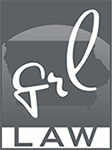Four pedestrians have been struck by DART buses in the past ten months with three of the four accidents requiring hospitalization of the pedestrian. Add to that the two accidents involving school buses in just the past month, the most recent involving a busload of preschoolers, and one cannot help but be concerned with safety on and around buses. In fact, it about prompted GRL to begin an advertising campaign of "hit by bus . . . call us." In any event, these recent accidents raise a number of questions regarding the safety of both bus passengers and pedestrians.
The first question that comes to mind as a result of the preschool bus accident is: Why are children not required to wear seat belts on school buses?
When being transported in an ordinary passenger vehicle children under the age of eleven years old must be secured in specialized "child restraint systems" according to Iowa Code section 321.446. There are stiff punishments for not complying with this law. The reason behind the law is to ensure that children who are much more fragile and susceptible to injuries in motor vehicle accidents are adequately protected in the event that an accident does take place. It makes sense that we take all available precautions to protect the health and welfare of our young and future generations. In addition to passing laws requiring drivers and passengers to "click it or ticket" we repeatedly hear public service announcements designed to encourage passengers in motor vehicles to wear their seat belts because "seat belts save lives." Ask any law enforcement officer, emergency response personnel or even attorneys practicing in this area of law and they will all tell you that more often then not, tragic deaths and permanent injuries could have been prevented in many cases had the injured person simply have fastened his/her seat belt. All of this being the case then, why does Iowa law specifically exempt "passengers on a bus" from the seat belt requirements set forth in Iowa Code section 321.445. The driver of the vehicle must wear his/her seat belt but the children seated in the rear are not required to? We have all seen the videos on news broadcasts of school buses being in accidents or running off the roads where the children are flailed about, launched from their seats and injured. All of this could be prevented if they were required to at the very least wear a lap belt. While it may require additional financial resources on the part of the school districts and more enforcement efforts on the part of the drivers, isn't the safety of our children worth it? The preschoolers in the recent bus accident were fortunate to avoid any injuries but what about next time? The federal government has taken notice of this problem and is working on legislation that will require them to be used at a minimum in smaller school buses. Unfortunately the proposed legislation does not take it far enough and will leave it up to the local authorities to decide whether or not seat belts should be required on the larger, more common buses. It will be up to the members of the local communities to raise their concerns on this and other similar issues that affect the safety of our children.
The second question raised by the recent bus-pedestrian accident is: What part of pedestrians have the right away do you not understand?
In the State of Iowa, pedestrians have the right away when crossing at controlled intersections and in compliance with pedestrian control lights. In an uncontrolled intersection, pedestrians have the right of way when crossing in the crosswalk or if no crosswalk is available, at the intersection. If none of these rules apply or if a pedestrian chooses to cross the street in any other locations, the driver of a vehicle is still required to maintain a proper look out. In the most recent bus-pedestrian accident, the Des Moines Register reported that the pedestrian was actually warned by onlookers and had to run to get out of the way of the bus that was apparently not slowing down. This would be an example of a driver not maintaining the proper look out which is exactly why the driver was issued a citation. While pedestrians do have a duty to maintain a lookout and use common sense as well, the ultimate responsibility falls upon the individual operating a multi-ton bus through pedestrian occupied areas.
All in all, DART is investing in additional training for its drivers and has hired an independent firm to conduct an investigation into the recent accidents which will hopefully result in effective changes that will keep us all a little safer. In the mean time, look both ways before crossing the street and if a bus is on the move, let it pass. Better safe than sorry.

